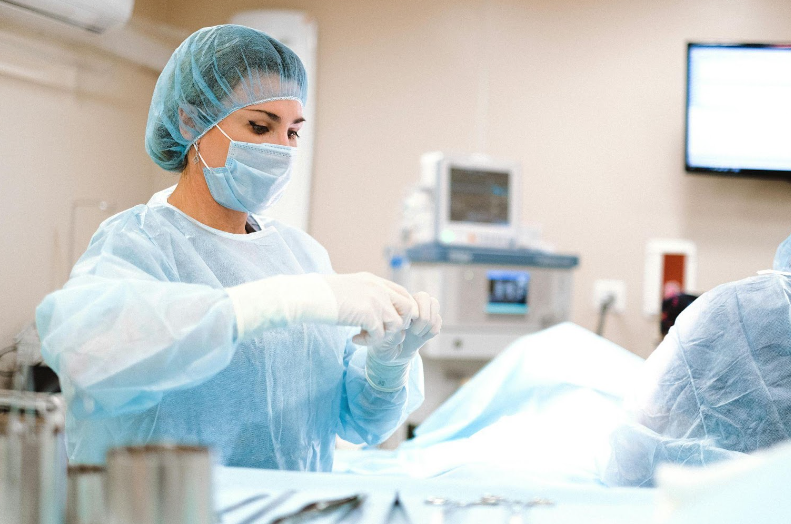A Comprehensive Guide to Vertebroplasty
A Comprehensive Guide to Vertebroplasty

If you have fractured bones in your spine, your healthcare provider may recommend that you have vertebroplasty. Read on to learn more about this procedure, including why it may be prescribed, what it involves, and some of its risks and benefits.
What Is Vertebroplasty?
This minimally invasive outpatient surgical procedure is designed to stabilize vertebral compression fractures. During the procedure, a special bone cement is injected into the fractured vertebra, effectively stabilizing it and reducing pain. This cement hardens quickly, providing immediate support to the compromised vertebra.
Why Do Compression Fractures Occur?
Compression fractures are a common consequence of weakened spinal bones. Under normal circumstances, vertebrae provide structural support and protect the spinal cord. When the bones become weakened, they are more susceptible to fractures, even from minor stressors.
Vertebrae may lose their strength due to the following reasons:
- Osteoporosis: Osteoporosis, a condition characterized by decreased bone density and strength, is a leading cause of compression fractures.
- Cancer: Cancer that metastasizes, or spreads, to the bones can weaken the structural integrity of the spine, making compression fractures more likely to occur. Additionally, cancer treatments such as radiation therapy can further weaken bone tissue, exacerbating the susceptibility to fractures.
Some common causes of bone fractures in weakened bones include sudden twisting movements, bending forward or backward, forceful coughing or sneezing, lifting heavy objects, and rolling over in bed.
Who Are the Candidates for Vertebroplasty?
If conventional methods of managing fractured vertebrae or back pain, such as pain medications, physical therapy, or bracing, have proven ineffective, vertebroplasty may be a viable alternative.
In some cases, vertebral compression fractures can lead to complications that necessitate prompt intervention. These complications may include deep vein thrombosis (DVT), acceleration of osteoporosis, respiratory problems, loss of height, and emotional or social issues.
What Are the Benefits of Vertebroplasty?
Let’s explore what makes vertebroplasty a preferred treatment option for those suffering from spinal fractures:
Minimal Recovery Time
Most patients can return home the same day as the procedure and resume light activities within a few days.
Improved Mobility
Spinal compression fractures can severely limit mobility and independence, making even simple tasks challenging and painful. Improved mobility not only enhances quality of life but also reduces the risk of secondary complications associated with prolonged immobility, such as muscle weakness and joint stiffness.
Prevention of Further Fractures
By stabilizing weakened vertebrae and reinforcing them with bone cement, vertebroplasty reduces the risk of additional fractures in the treated area. This proactive approach to fracture management can significantly reduce the need for repeat procedures and improve long-term outcomes for patients.
What Are Some Risks Associated with Vertebroplasty?
It is important to acknowledge and understand the potential complications associated with vertebroplasty, such as the following:
Risk of Cement Leakage
Cement leakage can occur if the bone cement is inadvertently injected outside the fractured vertebra, leading to irritation of nearby nerves or blood vessels. While minor cement leakage may not cause significant symptoms, more extensive leakage can result in nerve damage, spinal cord compression, or pulmonary embolism in rare cases.
Risk of Infection
It is important to remember that all surgical procedures carry risks of infection. While infections are relatively rare, they can occur at the site of the injection or within the vertebral body itself. Symptoms of infection may include fever, localized pain, swelling, or redness at the injection site. Prompt treatment of infections is essential to minimize complications.
How Can You Prepare for Vertebroplasty?
Your healthcare provider will provide you with specific instructions to follow in the days leading up to your vertebroplasty. This may include fasting for a certain period before the procedure, discontinuing certain medications that can increase the risk of bleeding, or arranging for transportation to and from the hospital or outpatient facility.
What Does the Procedure Include?
The vertebroplasty procedure begins with the administration of a local anesthetic to numb the area where the puncture will be made. Additionally, patients may receive minimal sedation to help relax during the procedure. This ensures their comfort throughout the process while allowing them to remain awake and responsive.
Vertebroplasty is typically performed in either an X-ray room or an operating room with the assistance of real-time X-ray guidance. This imaging technology enables surgeons to precisely visualize the fractured vertebra.
Using X-ray guidance, the surgeon inserts a biopsy needle into the fractured vertebra. Once the biopsy needle is in position within the fractured vertebra, acrylic bone cement is injected through the needle into the interior of the bone. The cement fills the empty spaces within the bone structure, creating an internal cast that supports and stabilizes the fractured vertebra.
After the cement has been injected, it begins to harden rapidly, typically within approximately 10 minutes. As the cement solidifies, it effectively binds the fragments of the fractured vertebra together.
With the cement in place and hardened, the surgeon removes the biopsy needle and applies a bandage to the site of the puncture.
What Are Some Post-Procedure Care Steps to Follow?
Following vertebroplasty, patients should rest for a period of up to 24 hours and gradually increase their level of activity. Some degree of soreness at the puncture site may last for a few days following the procedure, but this can typically be managed with the application of ice packs or over-the-counter pain medications.
If you were recommended for vertebroplasty, our professionals at
Arkansas Spine and Pain are here to help.
Schedule your consultation today.



